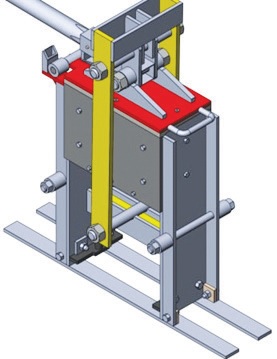
BY EPHREM ANDARGACHEW
Housing is undisputedly a core basic need for people living in rural areas where the majority of them are economically underdeveloped. Forests and forest products are their first priority whenever they construct houses for various purposes. Most policymakers, by emphasizing urban development and planning initiatives, neglect the demand for housing by rural populations.
Currently, taking the demand for rural houses and the need for environment-friendly technologies into account, higher education and research institutions are providing ecologically effective technologies to the communities.
According to the Manufacturing Technology and Engineering Industry Research and Development Center, rural communities have the resources which are needed for housing construction. Hence, research and technology institutes must carry out problem-solving studies to fulfill the demand of rural communities.
Accordingly, the center creates modern interlocking block/brick manufacturing technology which is important to build low-cost houses. The technology is environment-friendly and labor-intensive. It is used around Jimma where clay-content soil is found which is important to provide sustainable technological alternatives to improve rural housing in Ethiopia.
Haramaya University Institute of Technology has also completed the design work of a modern bricks production machine in collaboration with the Oromia state and put it into operation. The Institute Managing Director Engineer Hamiza Ahmednur told The Ethiopian Herald that the University has been discharging its responsibility by providing modern, integrated, and community-based technologies.
Currently, the institute creates modern and environment-friendly brick production machines which contribute to rural house construction. An integrated approach to designing and building healthy, comfortable, cost-effective, and houses is significant to mitigating climate change. Because of reducing waste and emissions, using eco-friendly building materials, and improving indoor environmental quality more efficiently than conventional designs.
Hence, the brick manufacturing technology has been completed and the communities, surrounding the university, could use it to solve their brick problems. Indeed, the modern bricks production machine enables the university not only to fulfill its social responsibility to the local community but also helps small and medium-sized industries to produce and market the technology, he explained.
Ecological-friendly modern technologies ensure sustainable development that alleviates the negative effect of climate change. It also provides affordable houses to the local communities. Most countries including local governments, via their higher institutions, are taking action to incorporate green building techniques into their planning and policy framework as a base for resource efficiency, a green economy, and sustainable housing development programs.
The technology is significant not only for building a low-cost, affordable, resilient, and eco-friendly house but also for utilizing locally available stabilized earthen construction materials. He also recalled that clay content soil can be found in many areas of Ethiopia. Since the trial work of the technology is completed, it is possible to use the technology not only in the East and West Hararge Zone but in all areas where clay soil content is located, he explained.
This modern brick production technology, along with ensuring mitigating climate change, will create job opportunities for many citizens since it is manual, easy to use, and does not consume electricity. If the machine is imported, it will cost up to 200,000 birr, but a locally created machine can cost around 20,000 birr. It can also replace imported brick machines and could be easily accessed by the communities. It is also a modern technology that is time-saving, pollution-free, easily transported by donkey or cart, and does not require complicated knowledge.
According to the International Fund for Agricultural Development, over 3 billion people live in the rural areas of developing countries. Most of them earn less than two USD per day and depend on agriculture for their livelihoods. They live in remote, marginal areas such as mountains, dry lands, and deserts with poor quality resources, limited communication, transportation networks, and weak institutions. Therefore, the involvement of higher institutions in the rural house construction process would help mitigate climate change initiatives.
The Ethiopian Herald September 7/2022




